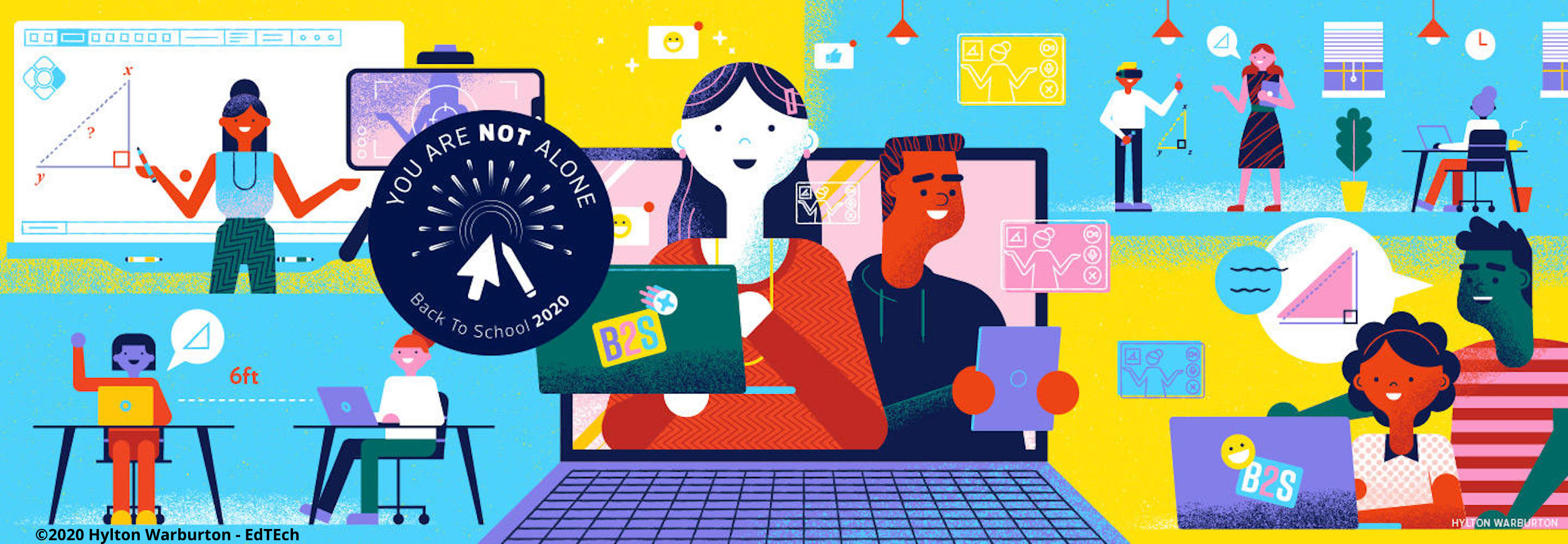The gig economy is alive and well. In fact, this modern online phenomenon has only…
Branding for Back-To-School: When everyone is learning from scratch
With U.S. students heading back to their studies (one way or another) during the COVID-19 pandemic, brands have pivoted their marketing to adapt. Top performers will act in real time, be flexible, focus on e-commerce, provide contactless opportunities, and consider thoughtful marketing.
As a Macy’s spot said: “No matter how we school, let’s be ready.”
“Those retailers that really pivot their marketing strategies to be in sync with how consumers are thinking and behaving are really going to come out on top,” Lisa Rosenberg, president of consumer brands at global communications agency Allison+Partners, told The Street in August.
The back-to-school market has shifted away from pencil cases and backpacks to health and safety products as well as necessities like desks, headsets, and even sweatpants. Content shifted early on from traditional paid ads to social media content on sites like TikTok, Instagram, and Pinterest. Brands have amped up discounts and online promotions as a response to the nation’s ongoing financial situation and the toll it’s taken on parents and teachers.
Ad production has notably taken a DIY approach, given social distancing requirements. Popular teen clothing retailer American Eagle directed, shot and produced its back-to-school campaign entirely on Zoom. Macy’s ads were coordinated by independent photography directors with children who could capture distance learning setups.
Similarly, Hollister launched a back-to-school TikTok challenge that encouraged users to share their own version of the #MoreHappyDenimDance dance. The dance challenged was a success and resulted in over 2.5 billion views.
It hasn’t been easy, and no one knows where spending will land when it comes to school year supplies. The National Retail Federation projected that parents with children in K-12 will spend a record $33.9 billion on back-to-school goods this year, up considerably from $26.2 billion in 2019. Other analysts offer a less rosy outlook, according to The Wall Street Journal.
survey findings
• Back-to-school advertising dropped almost 50% versus last year, with one-third of households indicating they wouldn’t shop at brick-and-mortar stores.
• More than half of U.S. consumers planned to use their smartphones for back-to-school shopping this year.
• Shoppers were more budget-minded, with 86% planning to spend less than $500 on supplies.
• Common purchases were expected to be school supplies (82%), clothing (64%), personal protection equipment (57%), electronics (38%), and furniture for educational use (21%).
The pandemic has forced brands to hone messaging for anxious consumers and reconsider visuals like people hugging or shaking hands. Target, for instance, featured special back-to-school promotions, contact-less services, supply lists by school name, virtual shopping experiences, and free two-day shipping.
“From Crayons to Dorm Décor, Tackle Every Back-to-Class List with Ease at Target,” reads the Target website, which features at-home learning supplies.
Walmart also features “home classroom must-haves” and “kids’ study space” categories online, while Danimals yogurt has an #AtHomeAdventures campaign across channels like Instagram for kids engaged in remote learning.
“If you have production footage of people without masks or people all together, suddenly that raises eyebrows. You’ve got to be very considerate about what you’re showing people and in what context,” Oz Etzioni, CEO of the personalization platform Clinch, told Marketing Dive. “You’ve got to be able to really quickly change the content, change the messaging and the tone, or else you’ll seem to be either irrelevant or insensitive.”
Kohl’s, which adopted a relatively positive and upbeat tone, recently announced a slow start to the season, while brands like Old Navy and Jansport met the crisis head-on by tackling more somber topics for young people such as civil rights activism and mental wellness. Others have taken a wait-and-see approach, but one thing is clear — no one can afford to completely ignore the current reality.




